Structure and Mixing Principle of Continuous Mixer
- • Shape that makes the most advantage out of batch-type non-gravity mixer.
- • Form with attached non-gravity mixer.
- • Mixing and conveying of raw materials are performed simultaneously by rotation of paddles.
- • Inputs and discharges of raw materials are simultaneously processed, enhancing production per unit time.
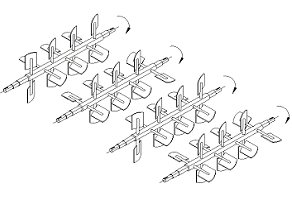 Paddle Mechanism
Paddle Mechanism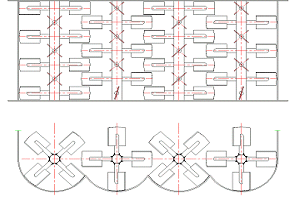 Paddle Layout
Paddle Layout
Characteristics of Continuous Mixer
- • It is easy to mix raw materials even with large difference in particle size andproportion.
- • It is possible to mix fragile raw materials.
- • Takes up less space than other continuous mixers.
- • Easy to continuously produce single type of product.
- • Facility is simplified, no need for complex facilities.
- • Advantageous not only for mass production but also for small production sites.
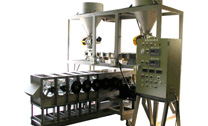 Continuous zero gravity mixer 1 (pilot)
Continuous zero gravity mixer 1 (pilot)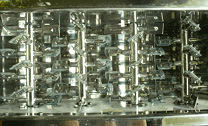 Continuous zero gravity mixer 2 (pilot)
Continuous zero gravity mixer 2 (pilot)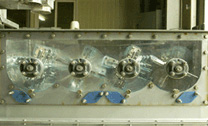 Continuous zero gravity mixer 3 (pilot)
Continuous zero gravity mixer 3 (pilot) Continuous zero gravity mixer
Continuous zero gravity mixer
Application field
| Field | Contents |
|---|---|
| Food industry | Coffee, frozen vegetables, seasoning, ramen seasoning, cereal, sugar, salt, etc. |
| Chemical industry | Carbon products, detergents, fragrance, PC, etc. |
| Ceramic | Refractory, flame retardant, clay / sand |
| Dry Mortar | Cement, building materials, fly ash |
| Pharmaceutical Industry | Animal medicine, pesticide |
| Other fields | Liquid coating field |
